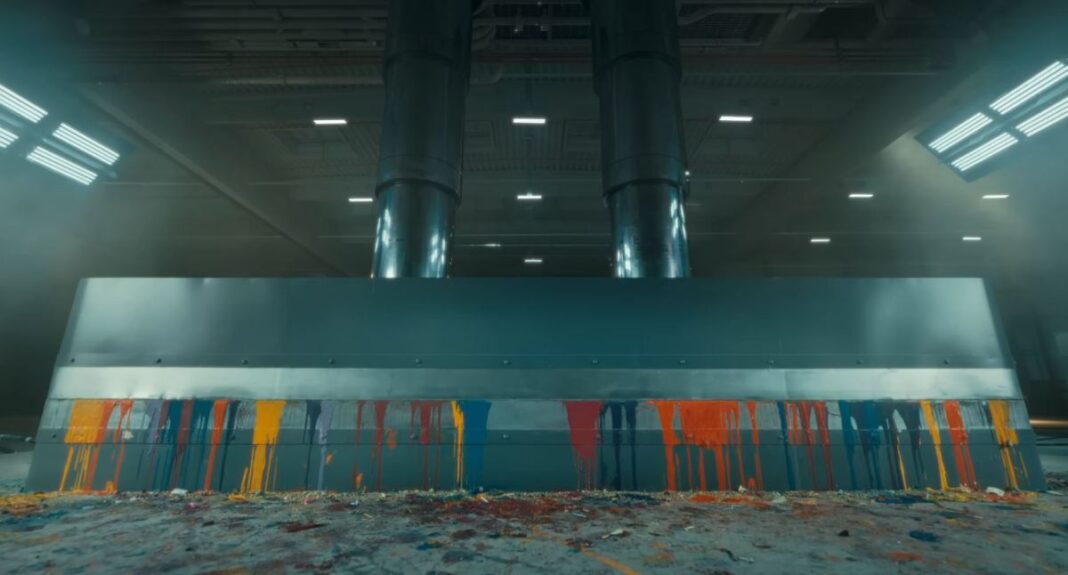Apple can generally be relied on for clever, well-produced ads, but it missed the mark with its latest, which depicts a tower of creative tools and analog items literally crushed into the form of the iPad. Many, including myself, had a negative and visceral reaction to this, and we should talk about why.
It’s not just because we are watching stuff get crushed. There are countless video channels dedicated to crushing, burning, exploding, and generally destroying everyday objects. Plus, of course, we all know that this kind of thing happens daily at transfer stations and recycling centers. So it isn’t that.
And it isn’t that the stuff is itself so valuable. Sure, a piano is worth something. But we see them blown up in action movies all the time and don’t feel bad. I like pianos, but that doesn’t mean we can’t do without a few disused baby grands. Same for the rest: It’s mostly junk you could buy off Craigslist for a few bucks, or at a dump for free. (Maybe not the editing station.)
The problem isn’t with the video itself, which in fairness to the people who staged and shot it, is actually very well done. The problem is not the media, but the message.
We all get the ad’s ostensible point: You can do all this stuff in an iPad. Great. We could also do it on the last iPad, of course, but this one is thinner (no one asked for that, by the way; now cases won’t fit) and some made-up percentage better.
What we all understand, though, because, unlike Apple ad executives we live in the world, is that the things being crushed here represent the material, the tangible, the real. And the real has value. Value that Apple clearly believes it can crush into yet another black mirror.
This belief is disgusting to me. And apparently to many others, as well.
Destroying a piano in a music video or Mythbusters episode is actually an act of creation. Even destroying a piano (or monitor, or paint can, or drum kit) for no reason at all is, at worst, wasteful!
But what Apple is doing is destroying these things to convince you that you don’t need them — all you need is the company’s little device, which can do all that and more, and no need for annoying stuff like strings, keys, buttons, brushes or mixing stations.
We’re all dealing with the repercussions of media moving wholesale toward the digital and always-online. In many ways, it’s genuinely good! I think technology has been hugely empowering.
But in other, equally real ways, the digital transformation feels harmful and forced, a technotopian billionaire-approved vision of the future where every child has an AI best friend and can learn to play the virtual guitar on a cold glass screen.
Does your child like music? They don’t need a harp; throw it in the dump. An iPad is good enough. Do they like to paint? Here, Apple Pencil, just as good as pens, watercolors, oils! Books? Don’t make us laugh! Destroy them. Paper is worthless. Use another screen. In fact, why not read in Apple Vision Pro, with even faker paper?
What Apple seems to have forgotten is that it is the things in the real world — the very things Apple destroyed — that give the fake versions of those things value in the first place.
A virtual guitar can’t replace a real guitar; that’s like thinking a book can replace its author.
That doesn’t mean we can’t value both for different reasons. But the Apple ad sends the message that the future it wants doesn’t have bottles of paint, dials to turn, sculpture, physical instruments, paper books. Of course, that’s the future it’s been working on selling us for years now, it just hadn’t put it quite so bluntly before.
When someone tells you who they are, believe them. Apple is telling you what it is, and what it wants the future to be, very clearly. If that future doesn’t disgust you, you’re welcome to it.
Source link









